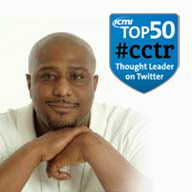Over the years, I have interviewed many candidates for numerous roles. During this time, I have refined how I conduct interviews. This is in part due to my maturity, training, feedback and discussions with colleagues. During this time, I have learned is there is more than one way. There are different styles of interviews available during the hiring process. You must determine which works best for you based on the role you're trying to fill and it significance.
One of the best lessons I've learned is that the interview sets the expectation for potential candidates. This sounds cliche, I know. While the interview does help a candidate get a glimpse into the company, it also offers the hiring manager an opportunity to display their management style, demeanor and express their intentions. I am a firm believer that my performance in the interview will be matched by the candidate’s performance once hired. As such, the interview must not be taken highly, should not be rushed, and must give the interviewee every indication that their time was valued. This has point of view has contributed to my contact center’s ability to hire and retain exceptional talent.
When interviewing new agents, my process includes the hiring manager, team/technical leads and myself. Each of us brings unique insight based on our individual roles and the relationship we have as a management team. Including other colleagues also allows me the opportunity to coach and train newer members of leadership on the nuances of interviewing and hiring the ideal candidate. But more than that, these varied perspectives help ensure we have the best candidate, not the one we like the most.
The interview itself consists of four parts, each of great importance in determining the best available candidate.
Interview: The interview is two parts. The manager and team leads will initially look to gain insight into the candidate’s background while also evaluating their interpersonal skills.
The second part of the interview includes me and the hiring manager. During this portion of the interview, it is my aim to drill down on their soft skills and technical skills. In addition, we view the candidate in light of department metrics. My desire it see how their background will aid them in working in an environment where metrics and performance management are used.
Testing: To ensure the proficiency of needed skill sets, candidates are given a test. However, a pass or fail criteria is not used. Rather, the aim is to gauge their troubleshooting style and their ability to solve complex problems.
Shadowing: In my opinion, it is wise to bring candidates to the contact center floor and allow them to shadow agents during calls or chats. This will provide them the ability to see the pace of work, the support volume, and the work environment.
Closing remarks: This allows the candidate an opportunity to ask questions, or seek clarification about the role or the company. When all things are equal, a candidate who is engaged, prepared and well informed about the position and company can distinguish themselves for the others.
While some may consider this process excessive for staffing contact center agents, it is also deliberate in that it identifies the best candidates. Not to mention, it shows the value we place on their role. Only the best are selected and they feel that when they come on board! Furthermore, applicants get to meet leadership team which establishes an early rapport and familiarity that lends itself well to agent engagement and trust.
Who should be included in the interview process? That depends on the results you desire.
Sean is a Contact Center manager with over 13 years of experience. He has a terrific pulse on incorporating innovation into the contact center. He's implemented social, outsourcing partners, new technology, and new products, while maintaining an award-winning contact center.
His contact center is a past winner of the ICMI "Global Call Center of the Year" award for Small to Medium-Sized Centers.
Follow on Twitter @SeanBHawkins


No comments:
Post a Comment